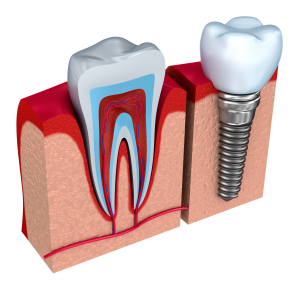The History of Dental Implants


Early civilizations knew that replacing teeth was important. There is some archeological evidence to show that Mayans, Egyptians, and Ancient Greeks tried to replace a lost tooth by embedding a foreign object into the jaw. Some attempts to replace missing teeth with jagged pieces of seashells or rocks, like jade, have been uncovered by researchers. For the last few hundred years, however, teeth have been replaced by dentures—made from various types of material including animals’ bones and wood. In fact, just two hundred years ago, a common wedding present was a set of false teeth.
Osseointegration: A Groundbreaking Concept
In the 1950s, an orthopedic physician discovered that bone fuses to titanium. This discovery led to the medical concept of osseointegration. This concept means that bone mass integrates to titanium by fusing to it. Once this integration is complete, a titanium implant in the jawbone, hip, back, or knee is stable and suitable for replacing mineralized tissue like the roots of teeth, bone, vertebrae and joints.
Since the 1970s, researchers and dental professionals have developed numerous prototypes for dental implants and over the years, the structure of an implant has improved. Now, we know that dental implants—when stabilized by bone—can last for the rest of a patient’s life and can support numerous prosthetics including dental crowns, bridges, and dentures.
To learn more about your tooth replacement options, contact the office of Drs. Miller and Sethman to reserve a consultation.